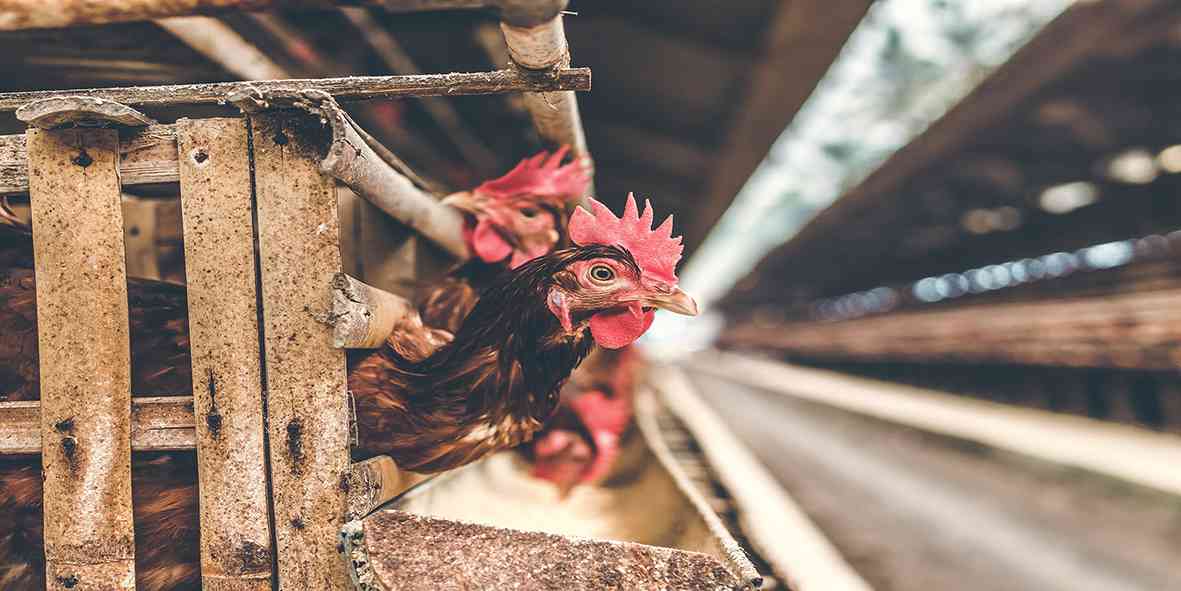Poultry, in animal husbandry, are birds raised commercially or domestically for their eggs, meat, and feathers. Poultry is the fastest growing agricultural sub-sector and the global poultry sector is expected to continue to grow as demand for meat and eggs is driven by a growing population, rising incomes and urbanization. Innovation and proven nutritional solutions are crucial to maximize broiler and layer performance in conditions of intensive production. Food safety and meat quality are the main priority, which is challenging as the use of antibiotics reduces. In layers and breeders, improving egg quality and quantity is crucial. To further optimize profitability and sustainability, the sector is also in search for solutions towards a longer lifecycle of hens. In combination with changing consumer expectations, this sector is facing unprecedented challenges. In light of this high quality feed additives are a decisive part of the feed solution.
A variety of different feed additives are commonly used in poultry diets, or can be used when the need arises.
Antioxidants
Fat is often added to poultry diets to increase the energy content, this is especially the case in high density broiler diets. In addition, if fish meal is used, it is high in fat. To help keep feed from going bad, which is common in high fat products, antioxidants are commonly added to the diet. Compounds with antioxidant properties include ethoxyquin, butylhydroxytoluene (BHT), butylhydroxyanisole (BHA), vitamin C, and vitamin E.
Free-flowing agents
It is important that the feed flow easily so that it does not cake in the feeders. Free-flowing agents are substances added to the diet to make sure the feeds do not pack down. Free-flowing agents typically have fine particulate structures while not reacting to the other ingredients in the feed. A common free-flowing agent is hydrated sodium aluminosilicate.
Pelleting additives
Pelleting of feeds has been shown to improve feed efficiency for some poultry species. Most broiler feeds are pelleted. It is important to make sure that the feed ingredients can be packed together in bite-sized pellets without a lot of fines. A variety of pelleting additives are available.
Feeding enzymes
Many of feed ingredients available for use in poultry diets have anti-nutritional factors which limit their use. Feed enzymes have been developed that break down these anti-nutritional factors increasing the potential of many 'alternative grains'. The use of feed enzymes is quite common in Europe where wheat and barley are often used instead of corn.
Mold inhibitors or mycotoxin binders
Cereals are subject to mold growth, which can happen in the field, during post-harvest handling, storage and processing. Even if the mold is removed, the mycotoxins they produce will remain and can be very toxic to poultry. Many feeds contain a mold inhibitor or a mycotoxin binder to prevent the mycotoxins from being absorbed trough the gut and into the blood stream. Common mycotoxin binders are Mycosorb, Mycofix, ProSid, Mycoad—which appears on the Organic Materials Review Institute (OMRI) list—and Toxisorb.
Coccidiostats
Coccidiosis is a problem in many species of poultry raised on the floor. The protozoa that cause coccidiosis are found everywhere. A low level of coccidia in the digestive tract is not a problem, but high levels can result in poor feed efficiency, poor health and ultimately death. Coccidiostats are sometimes added to feed to keep the coccidia at low levels, especially early in bird growth, to allow them to develop resistance. They do not treat the condition, but help in preventing it. Common coccidostats include amprolium (Aprol, Corid), decoquinate (Deccox), diclazuril (Clinacox), halofuginone (Stenorol), lasalocid sodium (Avatec, Bovatec), monensin (Coban), robenidine (Robenz), and salinomycin (Bio-Cox, Sacox).
Antibiotics
The digestive tract of all animals contain a diverse population of microbes. Some are classified as 'good' and are necessary for maintaining gut health. There are also 'bad' bacteria which, when present at high levels can adversely affect gut health, and can ultimately result in damage to the intestines. This is referred to as necrotic enteritis.. Low-level, or sub-therapeutic levels, of antibiotics can be added to feed to keep the 'bad' bacteria in check. Bacitracin is a commonly added antibiotic.
If a disease situation it may be necessary to add therapeutic levels of antibiotics to the feed, although for most treatments the antibiotics are added in the feed. A sick bird with typically drink but may not eat. By adding the antibiotics in the water you assure that the birds are being sufficiently treated.
Antibiotic alternatives
The desire to reduce use of antibiotics in animal production, alternatives have been developed. The best way to keep the 'good' bacteria at higher levels than the 'bad' is to add the nutrients which promote the growth of the good. These are referred to as probiotics, since they encourage the growth of some bacteria. Providing nutrients, such as mannan oligosaccharides (MOS), that promote good bacteria will help to maintain gut health. There are a number of MOS products available, including Bio-MOS, Celmanax, Nupro, and SAF-Mannan.




